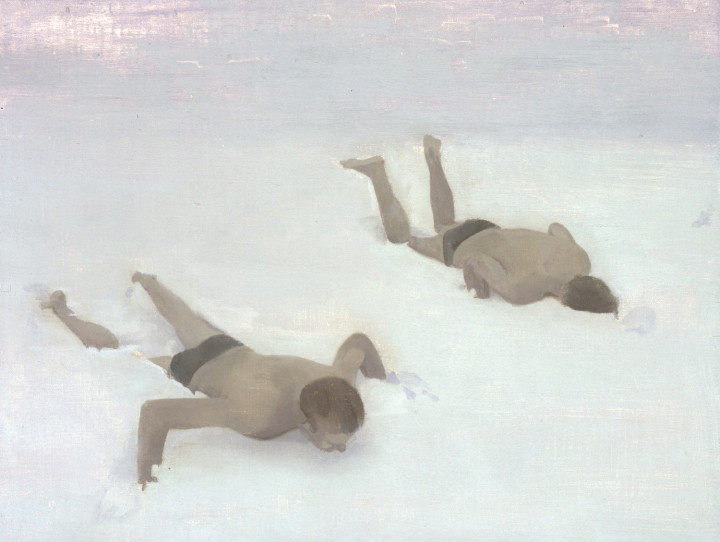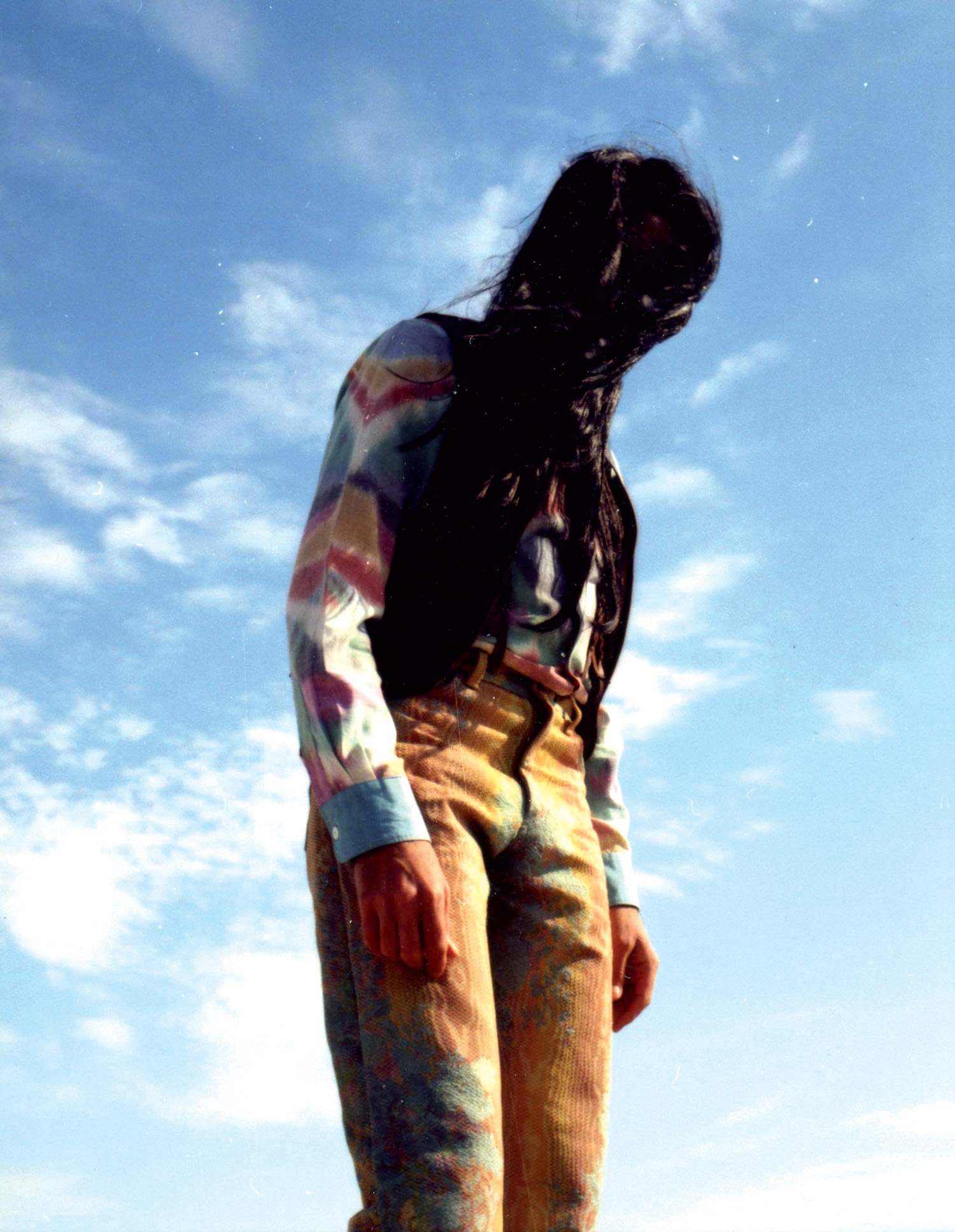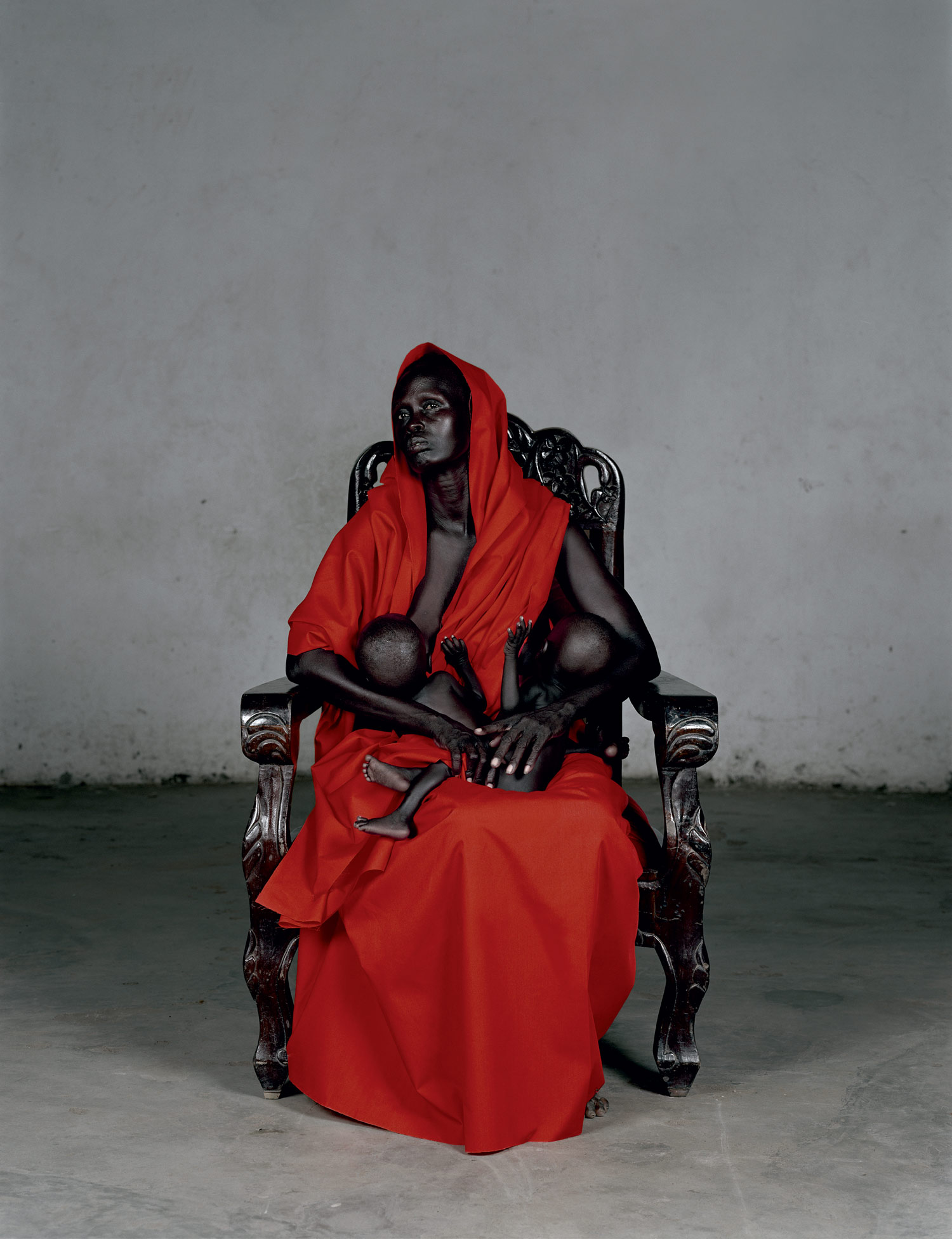
Victor Man’s painting is not what is but rather all that might be. It is a space of possibilities, in contact with itself at all points, inside it, outside it, next to it. Every work can function as a point of departure, within a logic of contiguity that leads to new and unexpected connections, like a cinematographic montage. The viewer is presented with a sense of dissolving bound- aries where the narrative appears posi- tioned but not fixed, as the mutual depend- ency of its multiple units can at any time be altered. Move them around and a different configuration will result. A relatively minor detour or diversion can lead to an entirely new subject area. What is set in place is not clearly defined; what is present invokes what is absent. His work functions more in the realm of semiotics than reality, allowing the painting to be part of the world, in its infinite openness and density, rather than letting the world into the painting as a form of closure.
However, an artist is someone who, by necessity, performs an act of closure, by making real that which was previously only a possibility. What Man values and aims at in art is a movement away from established forms of closure, or to use closure as a means of creating a sense of openness, of ‘depth’ and ‘richness.’ It is not that closure is abandoned; it is rather that it is postponed, delayed. Particularly compelling is the artist’s use of distance from and proximity with the limits of representation as previously understood. His work moves within the historicist accounts of painting as a location, but the work contains its own knowledge and experience and is not attempting to adhere to established codes. On the contrary, it seeks to measure its degree of continuity or rupture, revision or subversion, in relation to tradition and especially to aesthetic approaches based on referential content and homogeneity.
“I am interested in painting from the point of view of a sort of continuity in art history,” says the artist. “For at least fifty years the question of the ability of painting to move on has been continuously put forward. But maybe it is the very marginalization of painting that will bring it back to the center; this moribund status is fortifying it. I am directly inter- ested in what could give it a different meaning. I think that we are only at the beginning of its redefining.”

But what exactly are Man’s practice and his sources? He constantly uses images originated in the mass media, depriving them of any reference to what they represent or to the context they come from, to the point where identifying any logic fails and the image remains open to both abstraction and the impulse of a new story- telling. The images are transposed into wall drawings and oil paintings grouped as assemblages in relation to the architectural space in which they are placed. They are in a way ‘combines,’ exploring a certain formalist aesthetic through a language determined both from within and without by a sense of hybrid unity. The works produce meaning not by themselves but through their relationship within a shifting territory where narrative is a matter of negotiating locations, as it happens in The Maneuver, none (mr. quiet) or in the show “The Place I’m Coming From,” all absorbing interplays between spaces of reality and potentiality. Connected analog- ically, through a heightened awareness of context and through personal idiosyn- crasies, they recalibrate the perception of the world with which they are identified, and replace linear, conventional narrative with arbitrary layers and cycles. It is a tactic of minimal interference for maximal effect within the relational and repetitive continuum we experience.
Man takes the syntagmatic order of the world (as constructed by the mass media as a synthesis of the real) and turns it into a paradigmatic one, settling his own meta- harmony, where order, even in its random- ness, seems reliable and permanent. Furthermore, by injecting an air of unreality into his subjects, the images act as seductive entry points for an inquiry into how representation relates to the real object with a certain ambiguity and how its alter- ations can disrupt the given perspective and place of the viewer in the world. Once the terms of the look are established, it is time to move on and leave the work open to any interpretation. The artist remains in crucial respects committed mostly to the investiga- tion of aesthetic issues, even if the materials he uses are rooted in the media and the subject matters he engages are informed by traces of personal memory.
This brings us to another relevant aspect of Man’s practice, namely how he plays with autobiographical elements in his work. He belongs to a generation that grew up in the most austere period of Communism in Romania, the ’80s. Isolation and censor- ship affected to a certain degree his repre- sentational experience, as he used to take possession of anything that was not reachable — by looking at or, if possible, by recreating it. The clash between a teenager’s fantasies of Western popular culture and the Communist Romanian reality in which such inclinations were suppressed occurs explicitly in his last paper drawings installation at Timothy Taylor Gallery in London.

What is not so visible however lingering throughout his paintings is the scopophilic element to which the act of repression is led. He conceives his work as a signifier, but one which serves to distance the viewer from reality. This distance produces or unveils a lack within the viewer who is transformed into a voyeur trying — in every inch of painting and around it — to grasp the reality beyond the appearances. Even if the artist leaves very little trace of his subjectivity in the works, the desire to play with the audience, to control its gaze, emerges everywhere from underneath. It is present in the monochromatic painting installation Perfect Crime, shown at Plan b gallery in Cluj, where the viewer is left unable to convey an accurate truth about the subject portrayed, as well as in the images of a man buried in snow or of a painter with his easel in open space. In these works, the forms soar into space only to remove themselves and melt into the background as ghosts, as if to announce an absence rather than a presence, which encourage meditation on the flow between perma- nence and change, on ideas of veiling and revealing with an eye turned inward.
Elusive, allusive, discontinuous and fluid, Man’s painting is difficult to classify. It’s a mixture of modernist mono- chrome and residual figuration, or better, minimalist aesthetic austerity. Even color is only one part of the complex web of significations of his work; chromophobia seems to be another expression of his arbitrary order: essence over appearance, transcendence over common sense, the infinite ever over the finite now. However, in choosing his references, whether inherited, acquired, or absorbed, the artist presents such complex and faceted person- alities that a polarized mode of thinking becomes simplistic.
Why try to pin him down when it is the very mechanisms of classification that his art avoids with such perseverance? Expecting either meaning or perception to be straightforward is futile, because his painting is, more than anything, about levels of expectation, degrees of openness and closure. “I keep away from definitive statements,” he suggests. “I love the idea of going slow into things and if they become too explicit, to include new elements that disturb the coherence.” If the ultimate solution means closure, why would one wish for an ending instead of having the possibility of an insertion into the alive and infinite chain of interrogation?
Victor Man is a painter in love with his subject and he desires to keep it alive.





